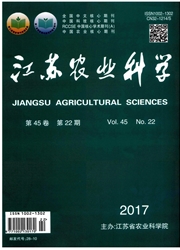

 中文摘要:
中文摘要:
在河边的区域散布的工厂经历泛滥和在年之间的干旱的经常的事件,并且因此,河边的工厂需要洪水容忍、干旱容忍。河边的工厂拥有各种各样的特点幸存泛滥,当他们到干旱的敏感收到了更少的注意时。调查生长和对泛滥和干旱的河边的种(Bolboschoenus planiculmis ) 的光合的回答,这种的工厂受到 60-d 在温室条件下面泛滥或干旱应力。生长和光合的特点在处理的结束被测量。也,我们在成熟叶子决定了光合的仪器的效率。B 的植物。planiculmis 足够地在泛滥和干旱条件下面调整了他们的生长和光合的特点。泛滥没影响未葬 B 的生长。planiculmis。根和根茎和新 tubers 的产生的增加的生长由在充满条件下面捕获资源建议了地下的侧面的生长的一个高能力。提高的光合的能力,保留的叶颜料集中和叶绿素一个荧光能力显示了光合的改编到泛滥。相反,干旱显著地减少了未葬 B 的生长。planiculmis,特别叶子,从而由于蒸发最小化水损失。它射击无性的繁殖模式可能提高的比率和方阵的增加的根土壤水举起能力。尽管 B 的功能的叶子。planiculmis 能保留他们的叶颜料集中,以及光合作用和叶绿素荧光,植物的全部的生物资源减少了,它可以是减少的叶区域的后果,由干旱建议不利效果。因此,生长和 B 的光合的回答。planiculmis 是可能的贡献这种的能力在河边的区域繁荣,但是对干旱仍然保持易感。
 英文摘要:
英文摘要:
Plants distributed in riparian regions experience frequent episodes of flooding and drought between years, and hence, riparian plants need to be flood- and drought-tolerant. Riparian plants possess various traits to survive flooding, while their sensitivity to drought has received less attention. To investigate the growth and photosynthetic responses of a riparian species (Bolboschoenus planiculmis) to flooding and drought, plants of this species were subjected to 60-d flooding or drought stress under greenhouse conditions. Growth and photosynthetic traits were measured at the end of the treatments. As well, we determined the efficiency of photosynthetic apparatus in mature leaves. Plants of B. planiculmis adequately adjusted their growth and photosynthetic traits under both flooding and drought conditions. Flooding did not affect the above-ground growth of B. planiculmis. Increased growth of roots and rhizomes and the generation of new tubers suggested a high ability of below-ground lateral growth by capturing resources under flooding conditions. Enhanced photosynthetic capacity, retained leaf pigment concentrations and chlorophyll a fluorescence capacity indicated photosynthetic adaptation to flooding. In contrast, drought significantly decreased the above-ground growth of B. planiculmis, especially the leaves, thereby minimizing water loss due to transpiration. Its increased root to shoot ratio and "phalanx" asexual propagation pattern might enhance soil water uptake ability. Although the functional leaves of B. planiculmis could retain their leaf pigment concentrations, as well as photosynthesis and chlorophyll a fluorescence, the total biomass of plants decreased, which may be a consequence of the reduced leaf area, suggesting adverse effects by drought. Therefore, both growth and photosynthetic responses of B. planiculmis are likely to contribute to the ability of this species to thrive in riparian regions, but remain susceptive to drought.
 同期刊论文项目
同期刊论文项目
 同项目期刊论文
同项目期刊论文
 Shifting effects of physiological integration on performance of a clonal plant during submergence an
Shifting effects of physiological integration on performance of a clonal plant during submergence an 期刊信息
期刊信息
